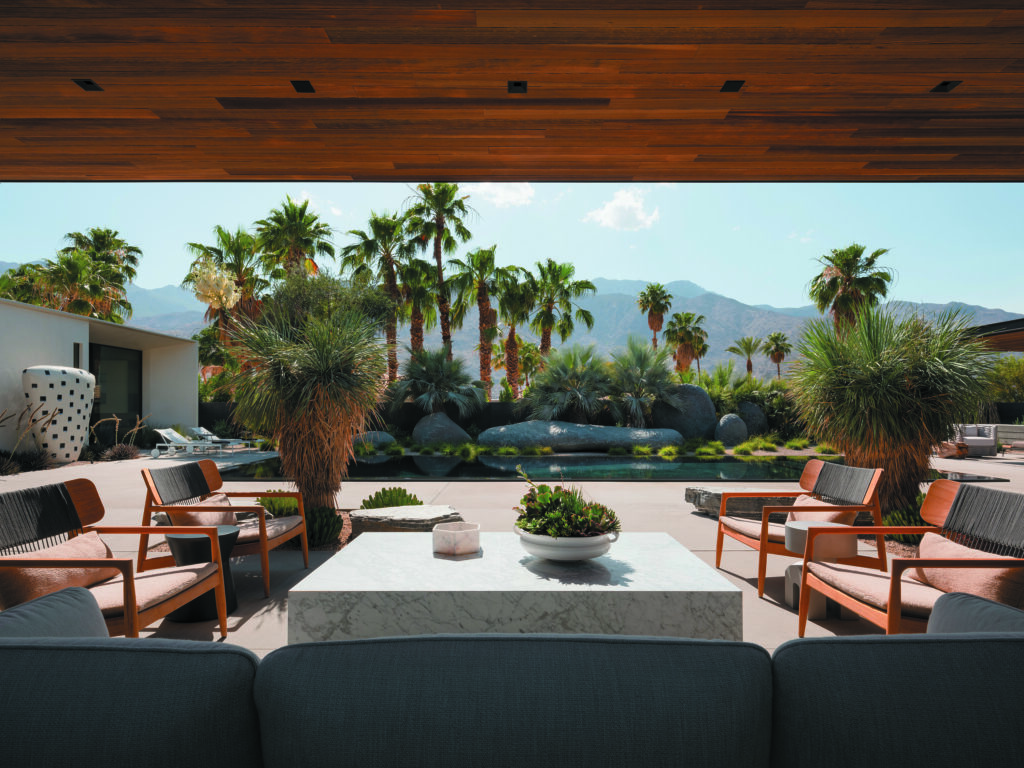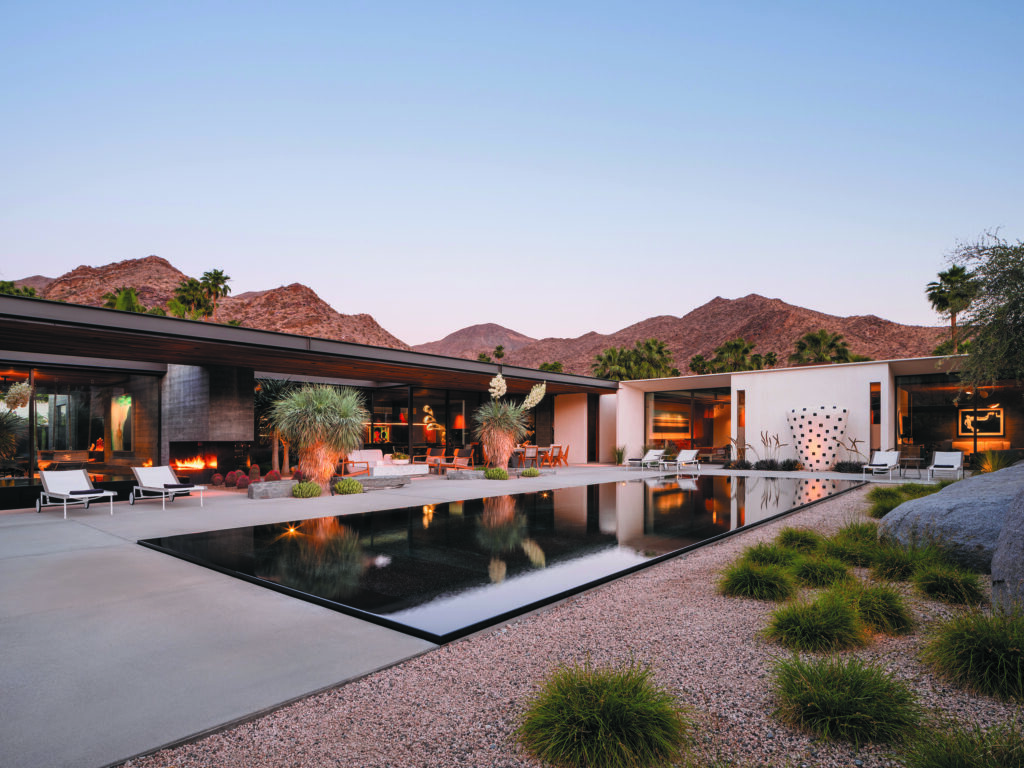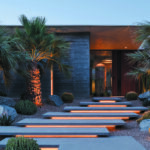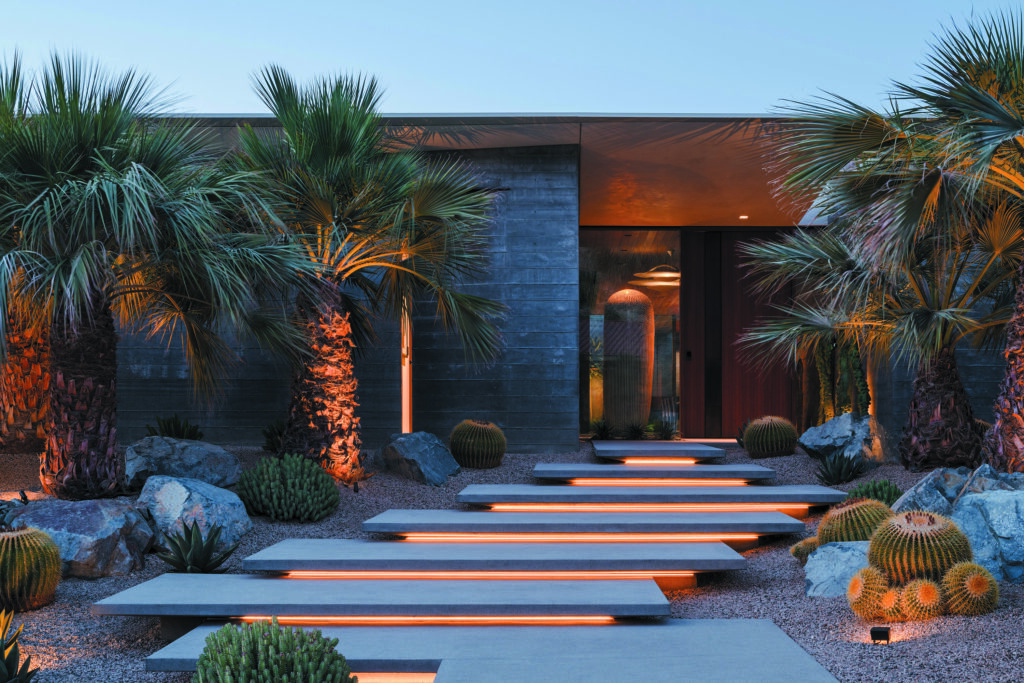2024 Residential Architecture Desgin: Studio AR&D Architects
Author:Abigail Stone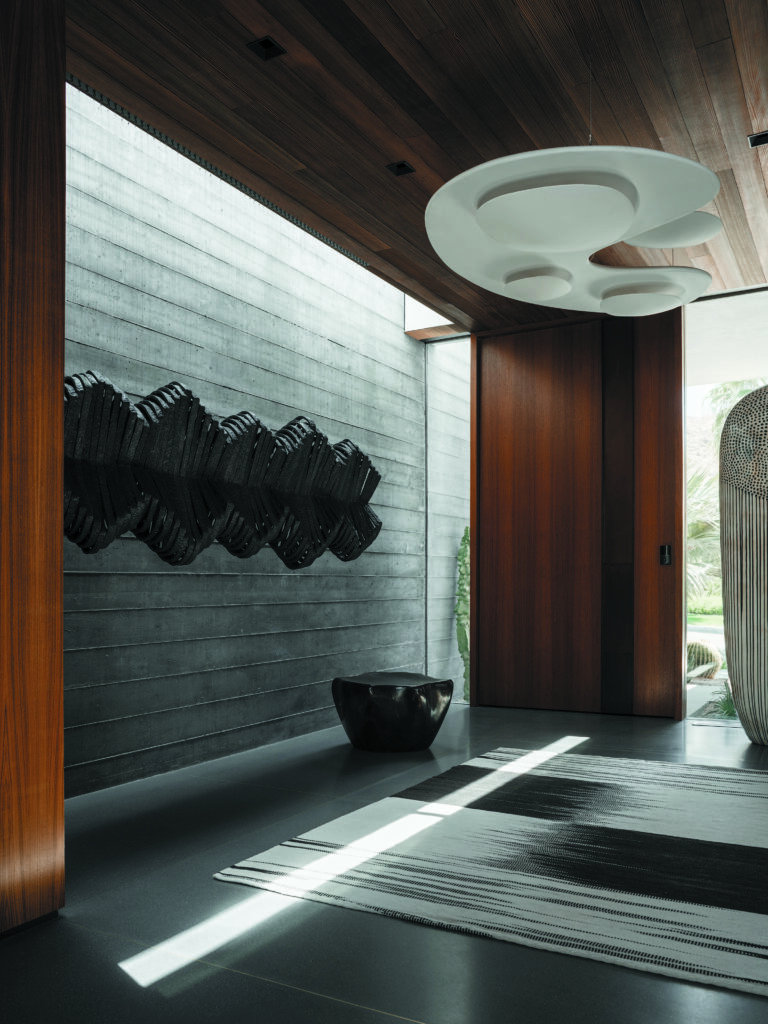
“Our aim was to create a house where the interior and exterior spaces not only read as one but were experienced as one,” says Studio AR&D Architects’ principal Sean Lockyer of the home he conceived of for a couple in Palm Springs. “And I think that we were successful in achieving that, with the landscape coming right up and even coming right into it at times.”
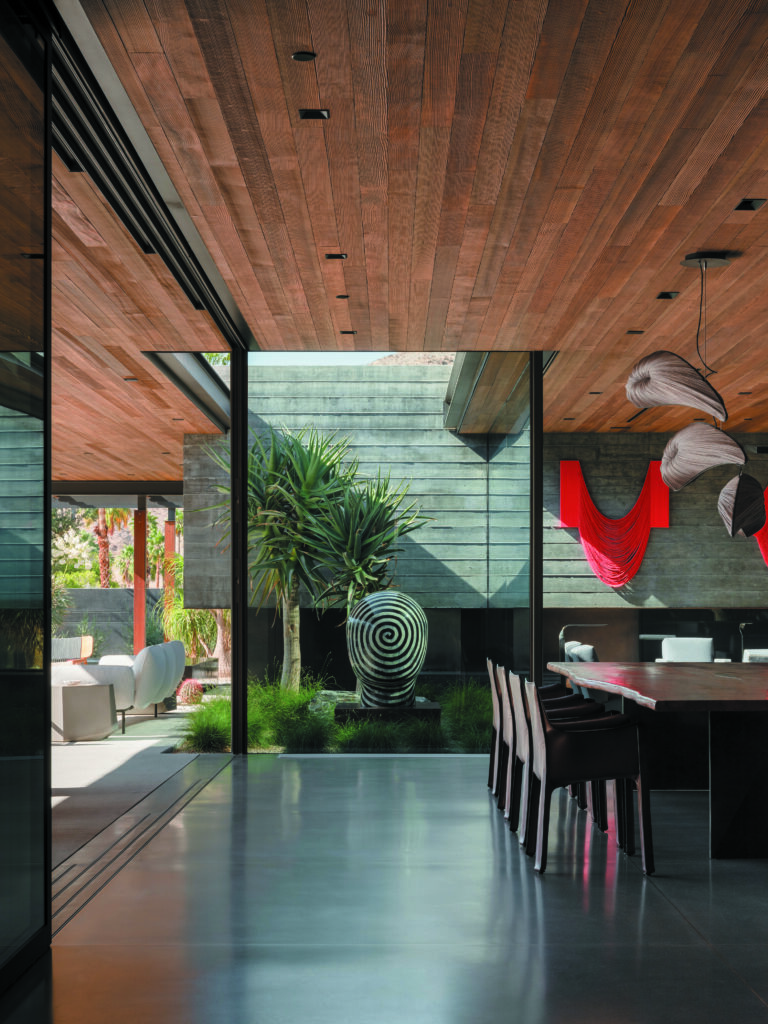
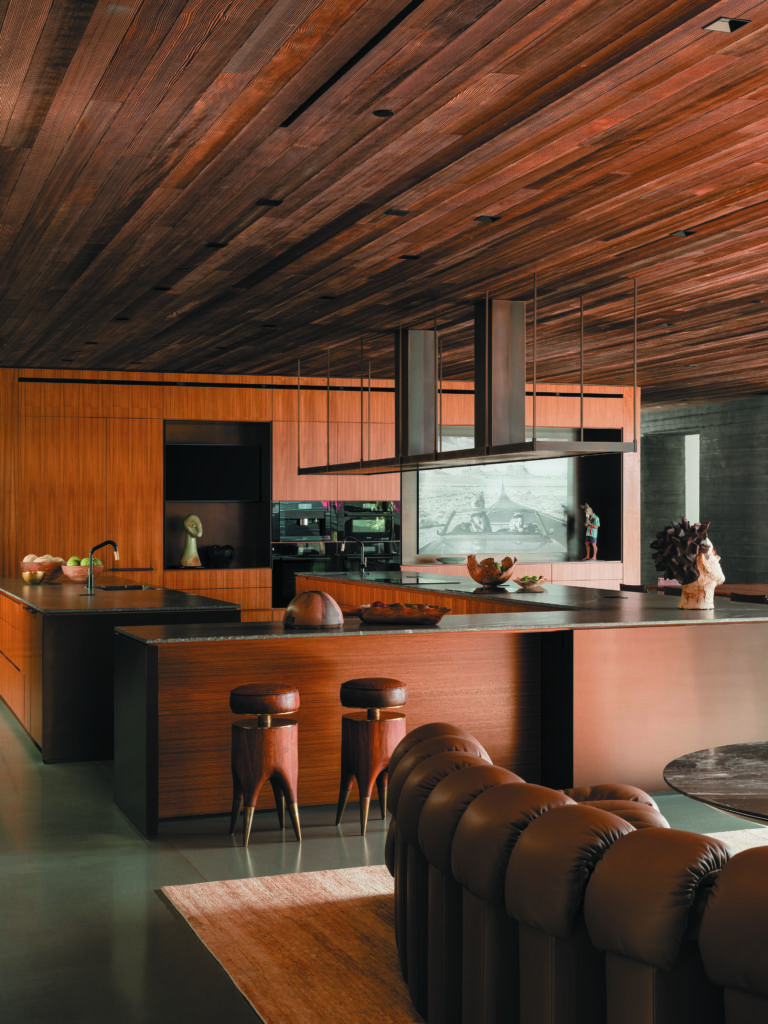
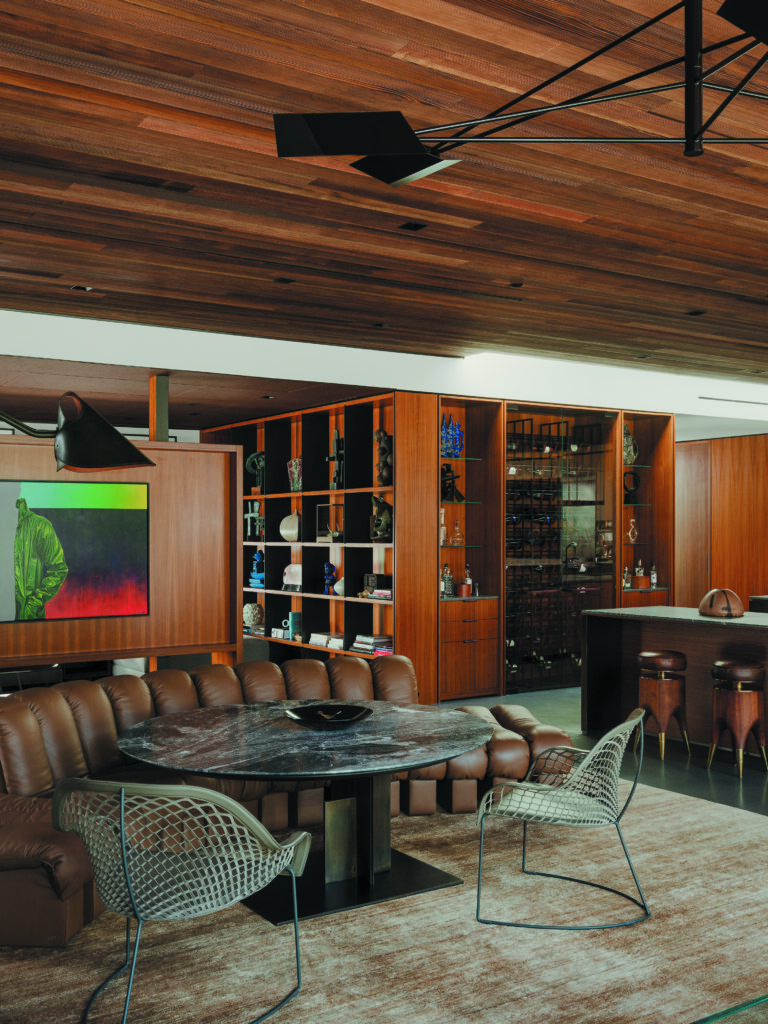
The home, located in the Indian Canyons neighborhood, was built on a formerly vacant lot. “There had never been a house here before,” says Lockyer who, anticipating the neighbors’ concerns, substantially lowered the house and the roofline, nestling the home into the site. “That way we would be sure not to block any views.” While that decision translated into a space with modest ceilings—“We’re not really a firm that designs homes that have these 14-foot-high ceilings,” Lockyer notes. “The height should relate to the space and the floor plan”—the result is far from oppressive. Instead, the low-slung house, with its floor-to-ceiling windows, its grand pivot doors and its expansive openings with their deep overhangs, reads as open and welcoming. Rich hues, charred Douglas fir ceilings and rugged finishes color the space cozy rather than cavernous, despite its substantial—even sprawling—7,000 square feet. “The consequence of these tweaks, adjustments and accommodations was that, instead of being a hindrance, what we ended up with turned out to be a much better house,” says Lockyer.
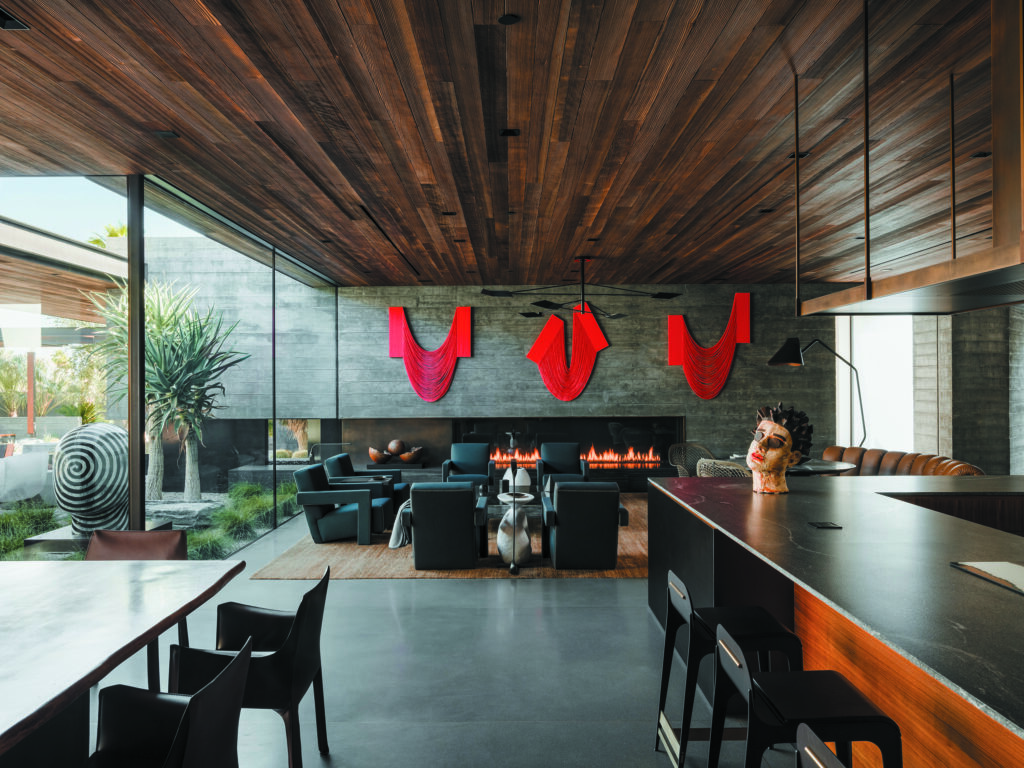
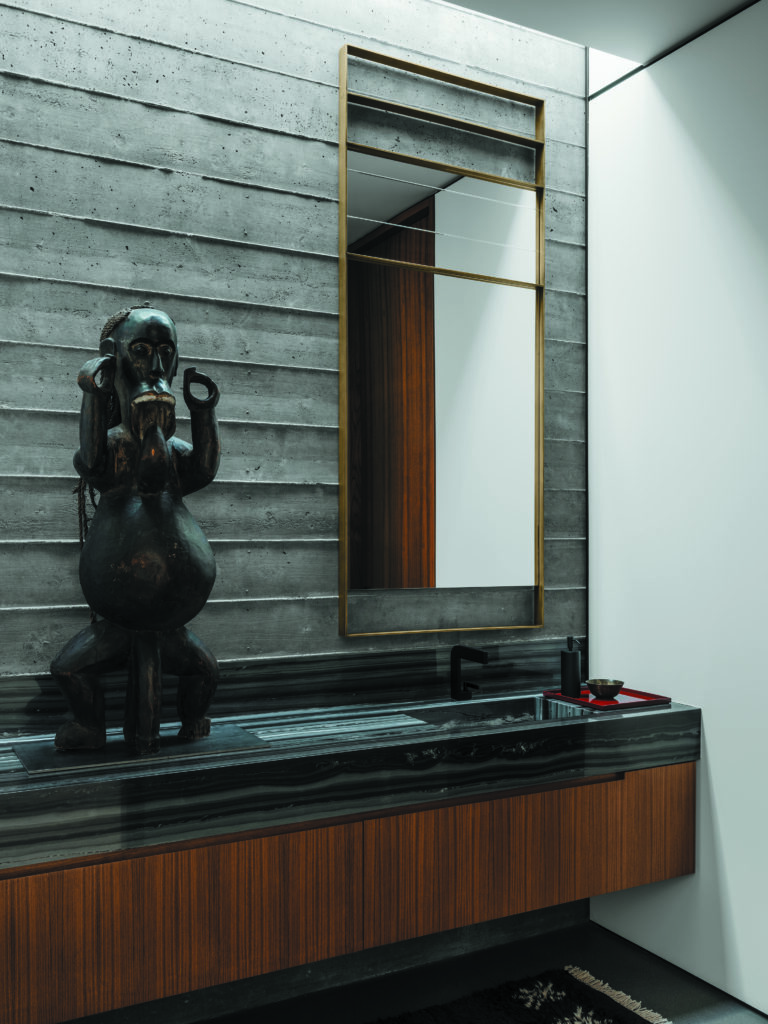
“We start with siting the house, so we’re thinking about the landscape and the layout simultaneously right from the beginning,” says Lockyer, explaining the firm’s approach. Bubble drawings capture the ideas for the different spaces and finesse the flow. “Then, from there, we’ll generate a floor plan and a site plan.” While bubble drawings may seem rudimentary, the provenance of first-year architecture students, Lockyer appreciates them for their flexibility. “It allows you to think much more abstractly about how the rooms will connect, how big they need to be, the relationships between them, how tall the ceilings should be, how everything will connect with the exterior, even about the best materials to use,” he shares.
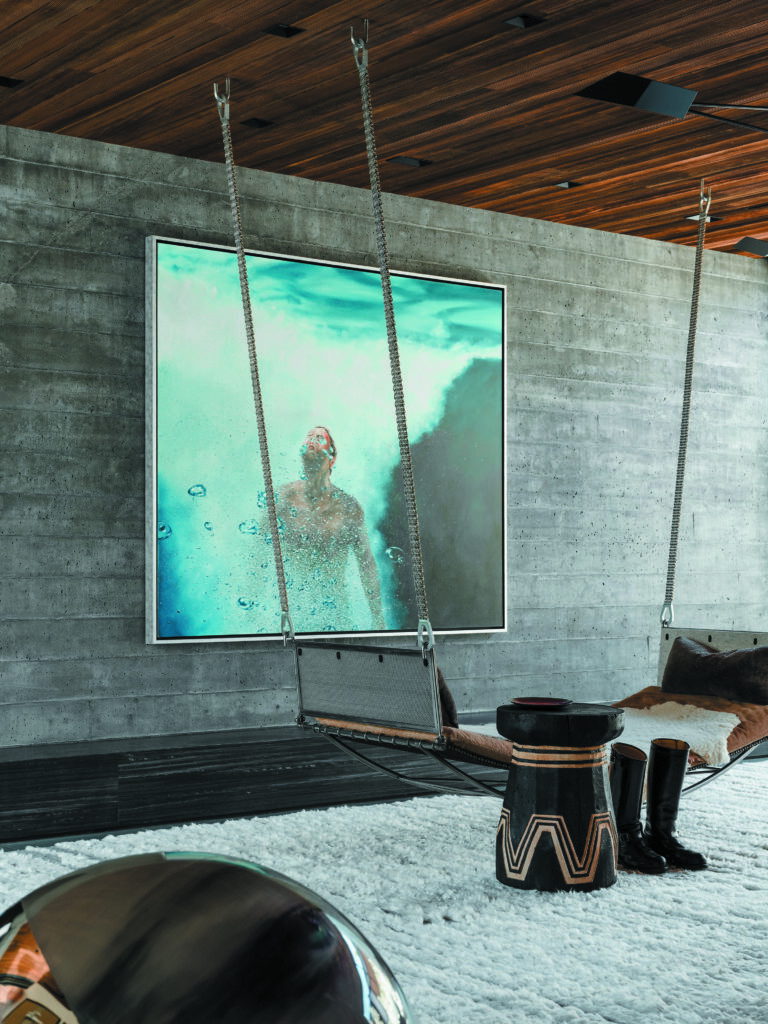
Photos by Lance Gerber.
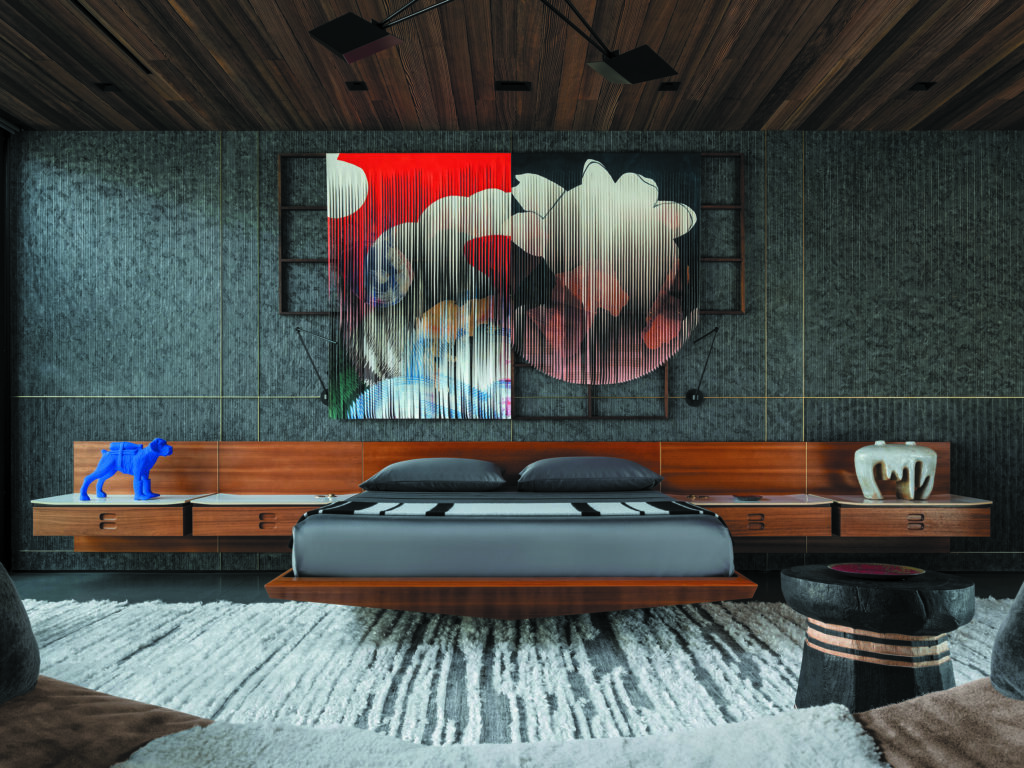
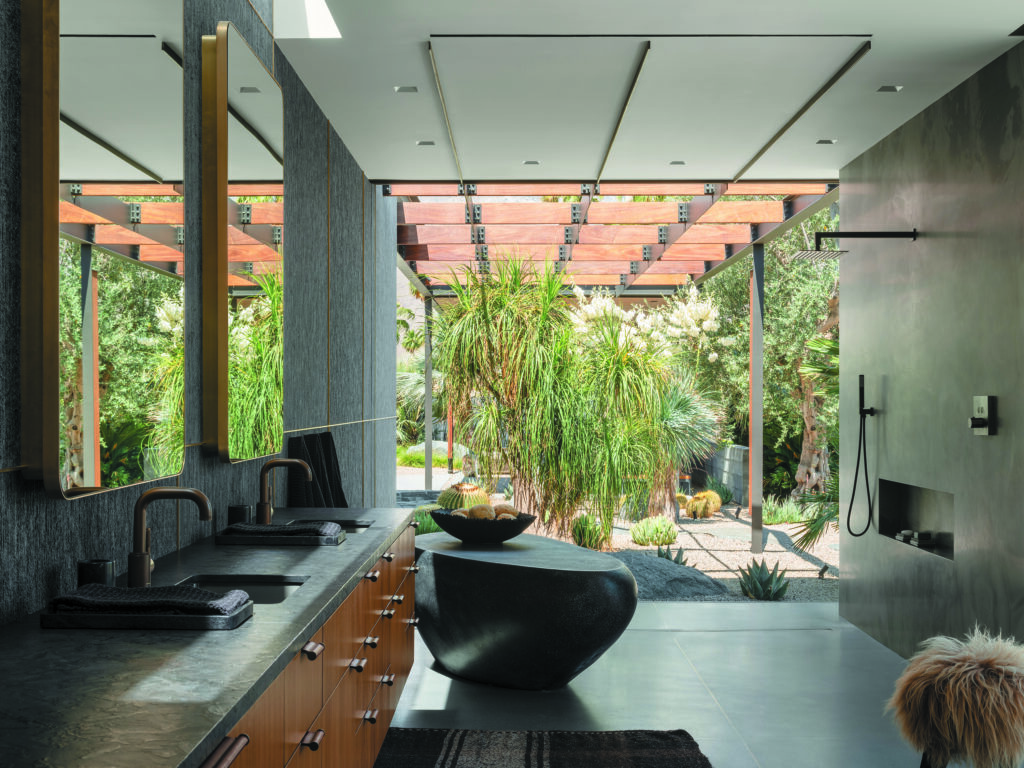
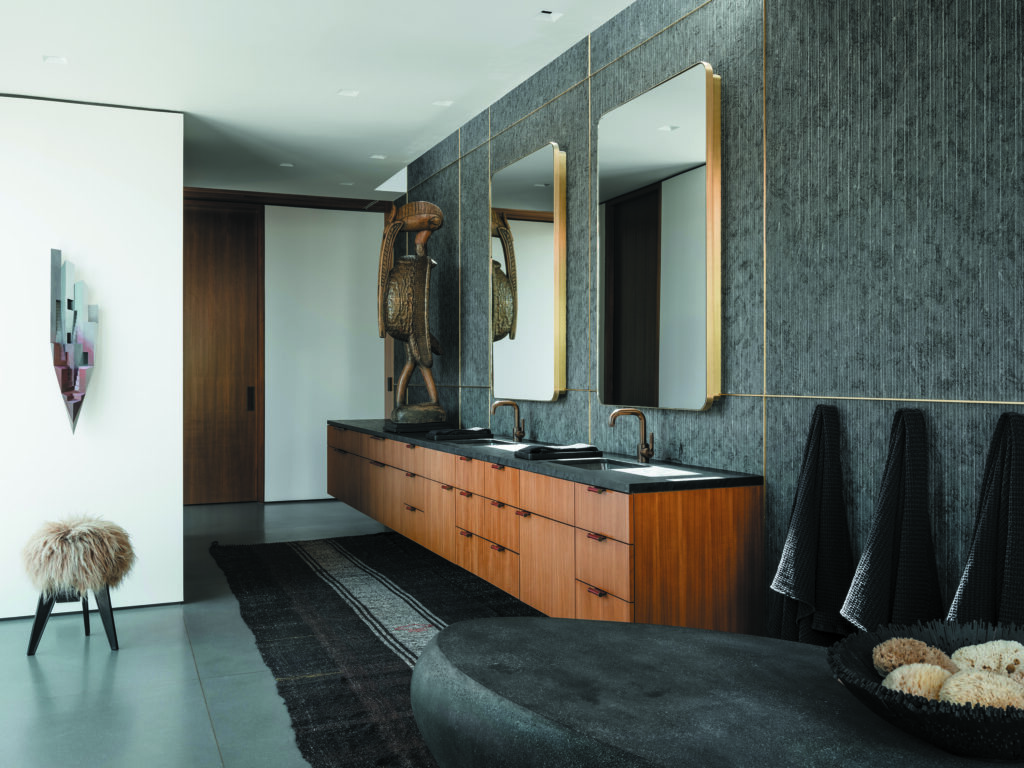
Ironically, despite the client’s insistence that they didn’t want to use any concrete, “they got a hell of a lot of concrete. I mean, there’s three major walls of this house that are all board-formed concrete,” Lockyer laughs. He champions both the material and the process, which patterns the concrete with the texture of the grain of the wood slabs used in its creation, admiring the depth it imparts to a home’s interiors. “They wanted the home to feel relaxing and restful, so we were looking for something that would feel organic and calm and earthy,” he says. “We’re very exacting about the entire process—carefully choosing the wood and thinking about the nuances of the texture it’s going to produce, the width of the boards, their grain, the color of the concrete, how we placed them—so that it really becomes the backbone for the interior design more than just something structural.” Plus he notes, it eliminates the need for insulation or painting. “Once it’s done, it’s done.”
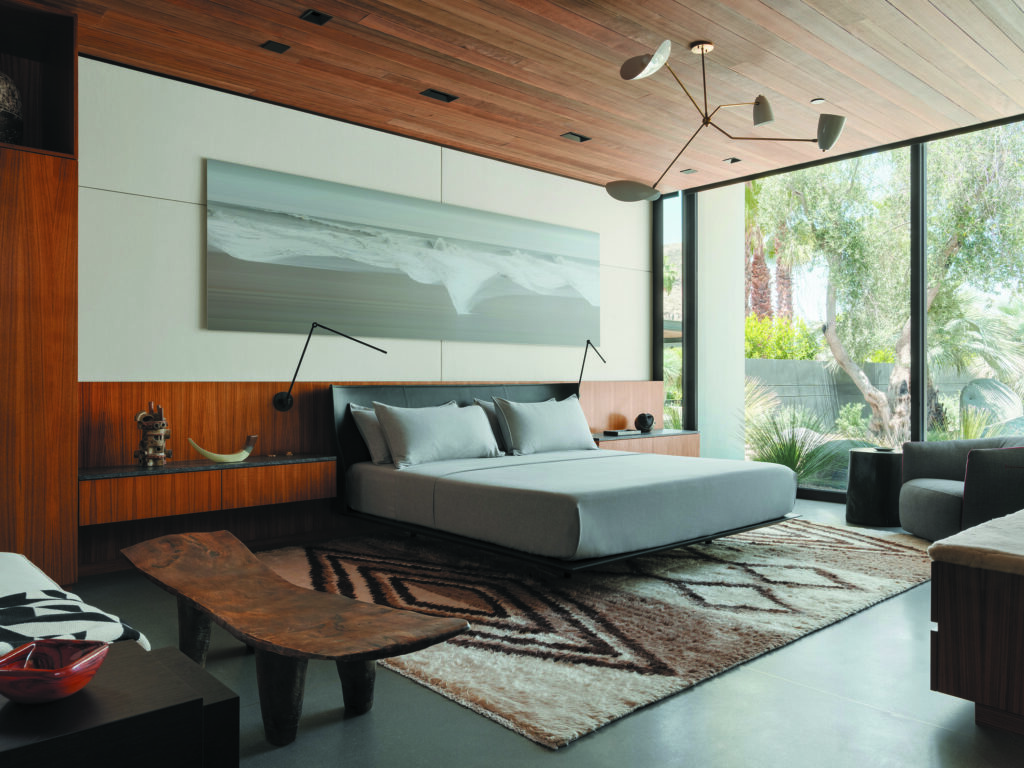
That approach also underlines the simple, sculptural beauty of the backyard, anchored by a pool which, courtesy of its zero edges, disappears into the landscape, morphing into a black mirror that reflects the sky. “It becomes its own piece of art,” Lockyer notes, balancing interiors that, created in partnership with Sam Cardella, showcase the clients’ extensive art collection. “We met two and three times a week, with calls and discussions in between that, to go over materials and ideas and photographs before we presented our ideas to the client,” Lockyer remembers. Everything, from the hints of brass and bronze that wend their way through the house to the floor plan and the placement of the furniture, was a collaborative effort. “We were very aligned, which enhanced everything and made the house feel very cohesive.” In fact, he notes, “from the level of finish to the craft to the customization, it changed how we have approached our projects moving forward, ” says Lockyer. “It was an unusual situation that worked out really well.”
